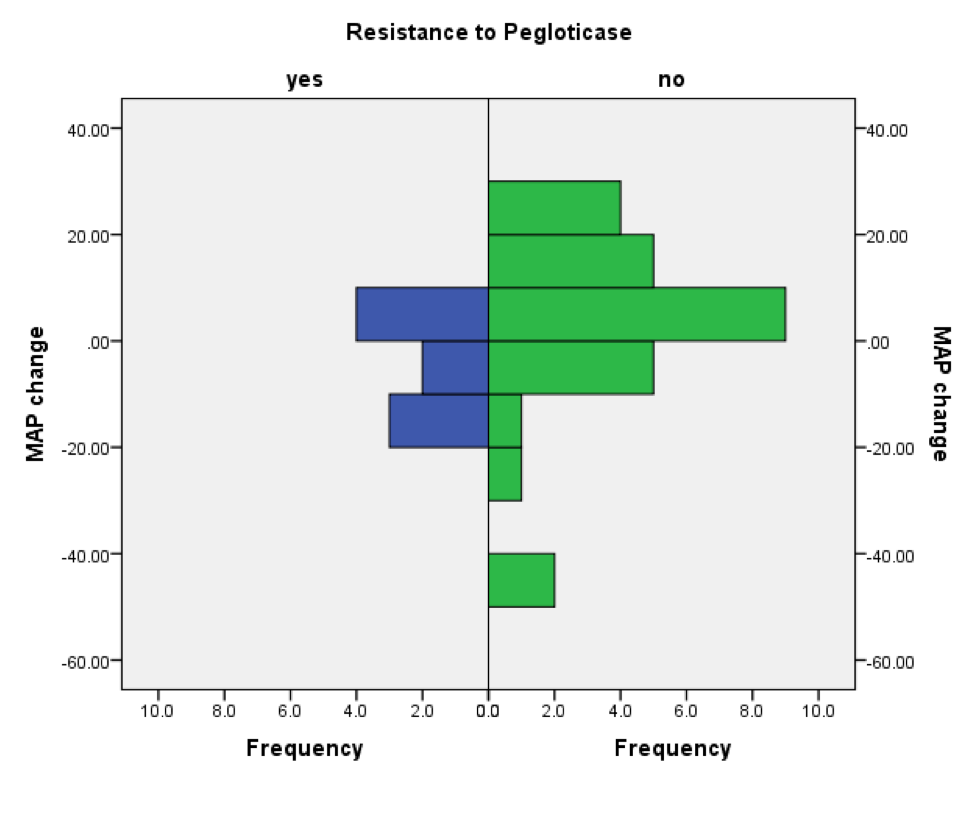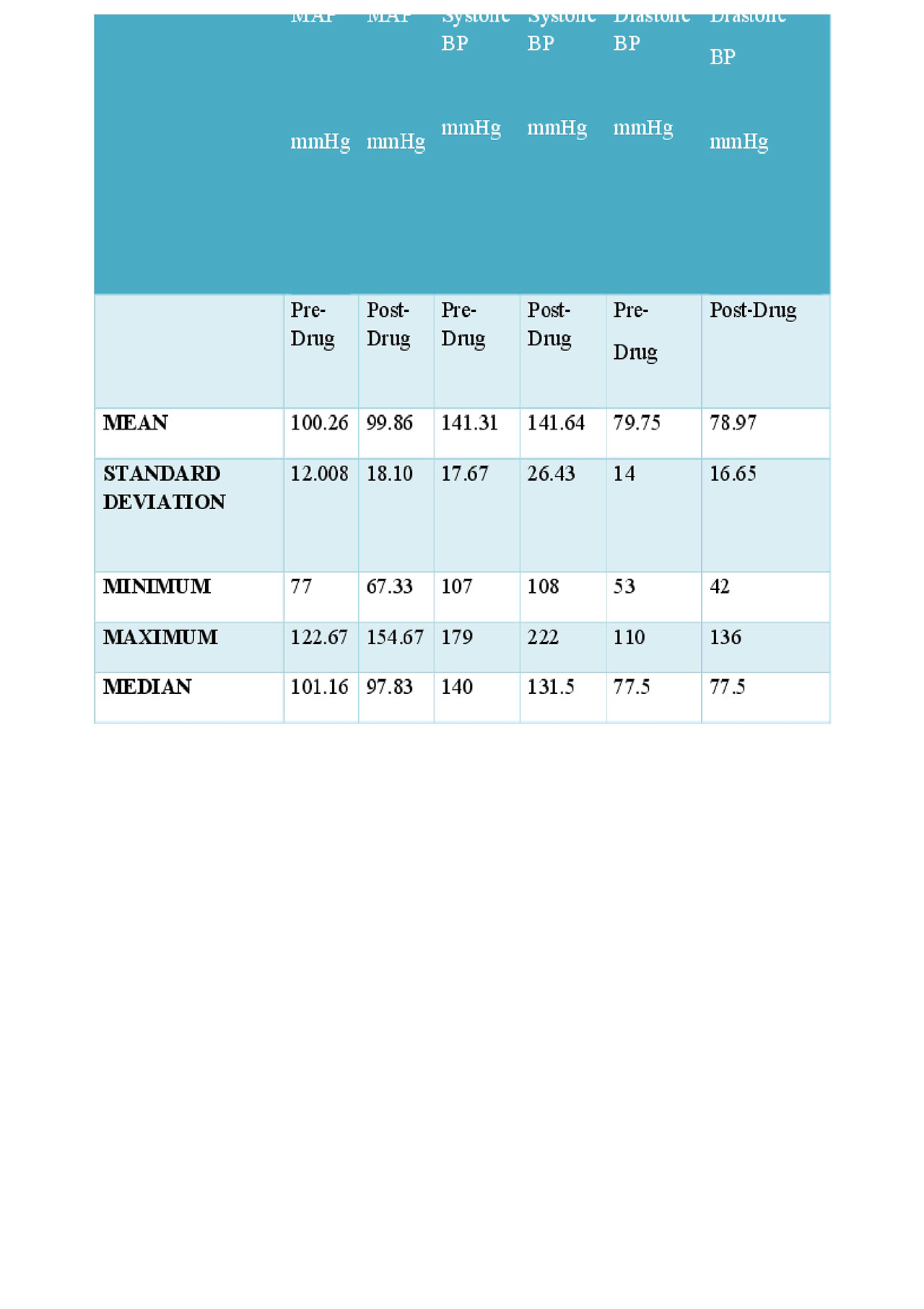Session Information
Date: Monday, November 11, 2019
Title: Metabolic & Crystal Arthropathies Poster II: Clinical Trials & Basic Science
Session Type: Poster Session (Monday)
Session Time: 9:00AM-11:00AM
Background/Purpose: Multiple studies indicate hyperuricemia as an independent risk factor for hypertension. However, the association is found to be age-dependent and weakens as the patient age. We determined the effect of Pegloticase (a plasma uric acid lowering agent) induced low serum uric acid level on mean arterial blood pressure (MAP). We also studied the following possible confounders to the MAP lowering effects of Pegloticase as mentioned above: Body Mass Index (BMI) estimated Glomerular Filtration Rate (eGFR) and Random Blood Sugar (RBS).
Methods: This retrospective study was conducted at the outpatient clinical department of Buffalo Rheumatology and Medicine. Catholic Health Institutional Review Board ethically approved the study. We recruited 36 patients of age 40 years o above receiving Pegloticase 8mg every two weeks. Patients were divided into two groups: responder and non-responder to Pegloticase, based upon individual serum uric acid levels (< 2mg/dl serum uric acid level was considered to be a response to Pegloticase). The difference in Mean Arterial Pressure (MAP) was noted when treatment was begun until when treatment was completed. A similar trend of difference in following confounders was observed at initiation and completion of therapy: BMI, eGFR and RBS. The data were analysed separately for the Pegloticase resistant and non-resistant group through SPSS 16.0.
Results: Our study sample included 28 males (77.8 %) and 8 females (22.2 %). The mean age of patients was 67.89 years ± 12.97 SD. Patients’ baseline characteristics are summarised in table 1. Each patient received 8 mg of a sustained dose of Pegloticase for a mean of 7.56 months. No statistically significant change in MAP was noted in either responder (t=-1.19, p=0.266) or non-responder group (t=0.534, p=0.598) from the time when therapy was initiated to when therapy was completed. Mean arterial pressure difference remains statistically non- significant and same across different durations of Pegloticase use (p =0.154). Furthermore, no statistically significant change was noted in following confounders for recruited patients: the eGFR (Z=-1.44, p=0.150), RBS (Z=-0.729, p= 0.46) and BMI (Z=-1.538,p=0.124).
Conclusion: Our study doesn’t show any significant change in the mean arterial pressure irrespective of the effect of Pegloticase on serum uric acid levels. This could be because most of our recruited patients were elderly with a mean age of 67.89 years ± 12.97 SD. Thus one can conclude that the relationship of uric acid with hypertension appears to be dampened with age. Although our results could be consistent with a differential role for uric acid in age-related hypertension, other possibilities remain. For example, uric acid may be associated with only certain forms of hypertension (e.g. one accompanying metabolic syndrome) as opposed to the isolated systolic hypertension related to arterial stiffening. More large-scale clinical studies are needed in this regard to dissect the role of uric acid in hypertensive individuals. We also did not find any significant changes in the considered confounding variables from the beginning towards the end of the study, indicating age as a significant determinant for Pegloticase induced lowering of MAP.
To cite this abstract in AMA style:
Waheed S, Zubair H, ubaid a, waheed f, Burns L. The Effects of Pegloticase on Mean Arterial Blood Pressure: An Age Modulated Relationship? [abstract]. Arthritis Rheumatol. 2019; 71 (suppl 10). https://acrabstracts.org/abstract/the-effects-of-pegloticase-on-mean-arterial-blood-pressure-an-age-modulated-relationship/. Accessed .« Back to 2019 ACR/ARP Annual Meeting
ACR Meeting Abstracts - https://acrabstracts.org/abstract/the-effects-of-pegloticase-on-mean-arterial-blood-pressure-an-age-modulated-relationship/


